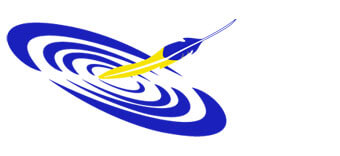Indigenous Awareness Training – Flexible Training Options
SCORM – LMS – HTML5
Do You Want Us to Host & Administer the training?
No hassles and no problems. Our systems are designed to support tens of thousands of learners. We have multiple options for hosting and onboarding students – each with the goal of simplifying administration and removing the burden of support so your team can focus on what you do best.
Our training portal is built using HTML 5, which is the eLearning new standard. This allows courses to be accessed from any device. It offers users more flexibility on how they access the course content. It makes it easier to customize the course content and is supported in all web browsers.
We make it incredibly easy to purchase, register, distribute access keys or coupon codes, and generate reports on progress and completion rates. We can accommodate your specific needs and even assist with the creation of Welcome Letters and other onboarding documentation. And you can leave the support to us so you’re not interrupted with password reset requests and other technical challenges.
Best of all, we include all these services at no additional cost to you.
What are the benefits of HTML5 for e-Learning?
HTML5 in eLearning is the new industry standard and it is much better than Flash.
- Reach a wider audience – including those on mobile devices.
- Greater accessibility for learners – anytime, anywhere, any device.
- Ease of customization – interactive, dynamic, and immersive.
- Multi-browser support included. No plug-in required.
- No restrictions on multimedia integration – it just works.
Do You Want to Host in Your Own LMS System?
No Problem. We can do that too. Our team has a wide range of expertise with dozens of Learning Management Systems (LMS), software packages, and registration systems.
We can provide any of our courses in industry-standard SCORM-compliant format. We use tools like the Adobe Suite and Adobe Captivate to create high-quality, reliable, and trackable modules. You simply need to install them into your training portal and you’re ready to go.
The team at Indigenous Awareness Canada will help you load our courses into your system and validate to make sure it works correctly.
Even better, we include all LMS onboarding and support at no additional cost. Everything you need is included in your license price. Others charge for this service and it can add a lot to the total cost.
What is SCORM?
SCORM stands for “Sharable Content Object Reference Model” and it is a set of technical standards developed for eLearning software products. The standards determine how online learning content and learning management systems (LMS) communicate with each other. Being SCORM certified means that you can use the same learning content in any SCORM compliant LMS. SCORM was developed and is now managed by Advanced Distributed Learning Initiative (ADL) to support the Department of Defence and their objective of standardizing learning objects to promote portability of training across systems.
SCORM is a powerful tool for online training. Content is created one time and is used in many different systems without modification. The primary goal of adopting SCORM is generally to create and interoperable system that will work well with other systems.
A SCORM-compliant online training course allows you to:
– monitor your employee performance
– Issue compliance reports
– Pause the course and go back to the section they were last on
– View the course on a variety of devices while keeping content consistent
Indigenous Awareness Canada’s online training is compliant with SCORM 1.1, SCORM 1.2, SCORM 2004 (formally known as SCORM 1.3).
Our content is ready to go and easy to load into your system.
What is Tin Can?
The major difference between Tin Can and SCORM content is the type of learning each can track. While SCORM is limited to recording online learning, Tin Can tracks almost any activity.
As a result, Tin Can delivers a far more detailed view of learner progress, within and beyond traditional learning environments, both online and offline. The kinds of learning it can track are almost infinite, including: reading a webpage, attending an event, borrowing a library book, playing a game, blended learning, and team-based learning.
